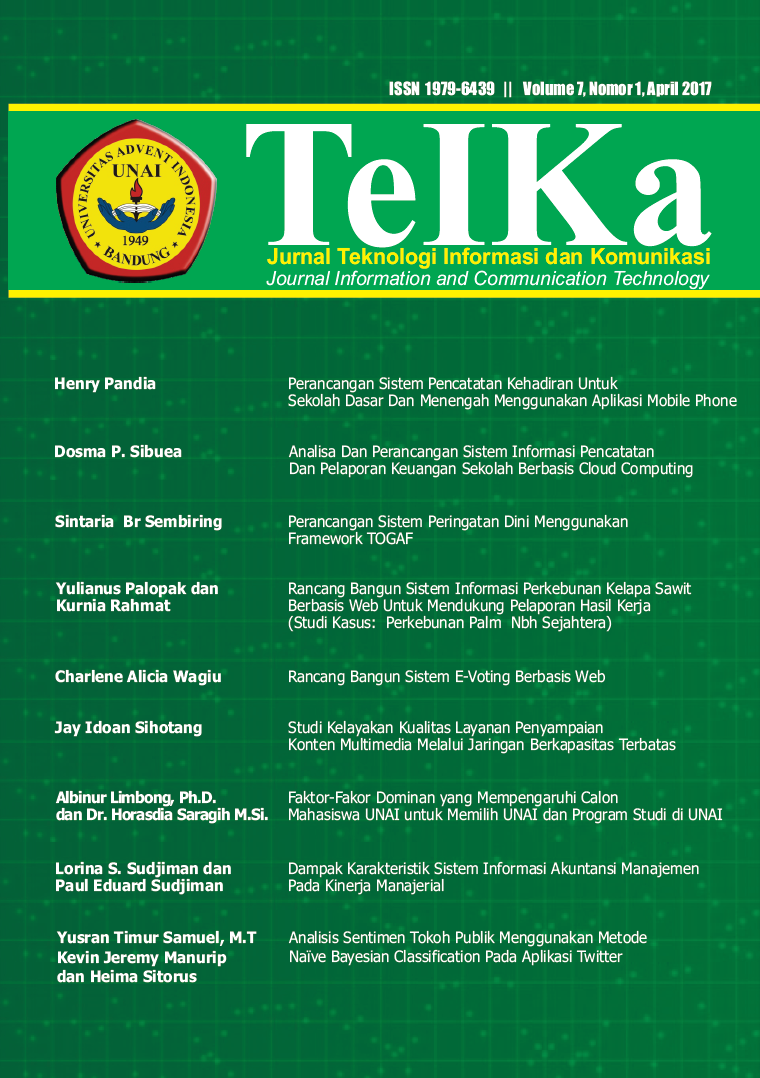SENTIMENT ANALYSIS OF PUBLIC FIGURE USING NAÏVE BAYESIAN CLASSIFICATION ON TWITTER APPLICATION
Keywords:
Sentiment Analysis, Naïve bayes, Naïve Bayes Classification, TwitterAbstract
Social media has provided a variety of information, especially content that is subjective or reflects the opinions of people who write. Today more and more people express their opinions or opinions on community leaders such as regional leaders, officials, influential people, and so on. Social media has provided a variety of information, especially content that is subjective or reflects the opinions of people who write.
Today more and more people express their opinions or opinions on community leaders such as regional leaders, officials, influential people, and so on. Sentiment analysis on the Twitter social media application there are weaknesses in the words contained in the sentence uploaded by the application user. In this case the object of the research was carried out to Ridwan Kamil with Sentiment Analysis from the people. Based on the research conducted, it was concluded that 59 training data had an accuracy of 81.3559%, and the results obtained from testing data were: 1. There were 3 data that were truly classified as having neutral sentiments, 2. There were 7 data classified really have positive sentiment, 3. And there are 2 data that really have negative sentiment.
Downloads
Downloads
Published
How to Cite
Issue
Section
License
The submitting author warrants that the submission is original and that she/he is the author of the submission together with the named co-authors; to the extend the submission incorporates text passages, figures, data or other material from the work of others, the submitting author has obtained any necessary permission.
Articles in this journal are published under the Creative Commons Share Alike Attribution Licence (CC-BY-SA What does this mean?). This is to get more legal certainty about what readers can do with published articles, and thus a wider dissemination and archiving, which in turn makes publishing with this journal more valuable for you, the authors.
By submitting an article the author grants to this journal the non-exclusive right to publish it. The author retains the copyright and the publishing rights for his article without any restrictions.










